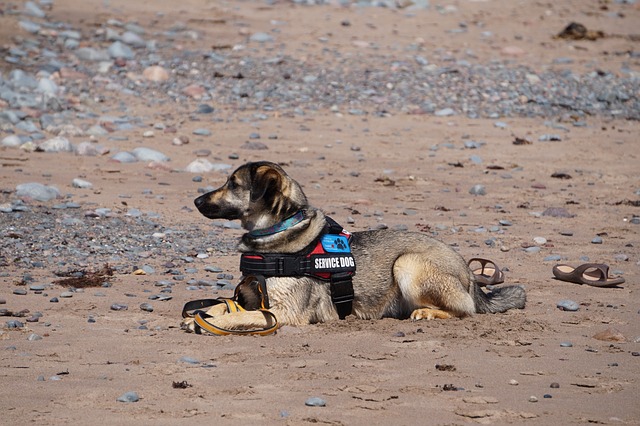More Than Just Pets: Military Working Dogs

Our dogs are there for us no matter what; in good times and bad, happy or sad. They wait for us when we come home after a long day of work and they wake us up every morning with a smile and a wag of their tail. Dogs are our best friends, our constant companions, and our children.
But dogs are more than just members of our family. They are highly intelligent animals that provide many important services that benefit our communities and our country. Also known as “police dogs” or “K-9s,” military working dogs have a long history in the United States, dating back to World War II.
History
After the attack on Pearl Harbor during World War II, a movement began to encourage dog owners to donate their dogs to help the military. Thus began the training of the “K-9 Corps”. The basic training lasted 8-12 weeks and the dogs were trained to perform commands (sit, stay, come, etc.), ride in military vehicles, get used to the sounds of war, etc. Once the initial training was complete, each dog underwent specialized training tailored to its strengths:
- Messengers: These dogs were trained to be very loyal to two people, as they had to be able to move silently and quickly between the two and deliver messages.
- Scouts: Using their sense of smell and hearing, dogs are trained to silently spot booby traps, snipers, hidden weapons, etc.
- Sentries: Sentry dogs defend camps and other important areas. They emit a signal to warn their human counterpart that someone (or something) is approaching.
- Mine Detection: Mine dogs were trained to find trip wires, booby traps, and metal and non-metal mines.
Today
Today’s military working dogs have a variety of roles but are rarely used on the front lines, unlike their ancestors. Currently, there is only one facility in the United States that trains dogs for military purposes. Although still used as sentries, scouts, and mascots, modern military working dogs also perform the following services:
- Law enforcement: Many dogs have valued partners and even officers in local police forces. They can chase, track and guard suspects, but also react when their police officer is attacked.
- Drugs and explosives: Drug detection dogs can sniff out a wide range of illegal substances, even in tightly sealed containers. These dogs are also capable of detecting explosives and are very useful at airports, entry and exit checkpoints, and secure areas.
- Search and Rescue: Dogs are also an integral part of search and rescue efforts. These dogs can track and detect human scents and are trained to help find people who have become lost in the woods, trapped under an avalanche, etc.
Common breeds used
The most common breed used for law enforcement operations is the German shepherd, but in recent years smaller dogs with a finer sense of smell have been used for detection work. The Belgian Malinois and Dutch Shepherd have also proven to be very useful for patrols.
Other military working dog breeds include Boxers, Argentine Dogos, Labrador Retrievers, Doberman Pinschers, Springer Spaniels, Bloodhounds, Beagles, Rottweilers, and Giant Schnauzers.
Dog Handlers
Each military working dog is cared for by one person, called a handler. The handler is paired with a dog after the dog has completed training. Although each handler may not have the same dog for their entire career, they work with one dog for at least a year, and possibly much longer.
Adoption
Military working dogs work extremely hard and provide many years of loyal service due to their skills and training. Once these dogs have retired, there are many programs to place them in loving homes so they can spend their retirement in comfort and relaxation while giving another person or family the joy of having a dog.
Many people view dogs as just pets. If you are a dog owner, you already know that your dog is more than just a “pet. Yet we don’t always think about military working dogs and the fact that they spend most of their lives performing valuable services to keep us safe. These dogs are canine heroes.





